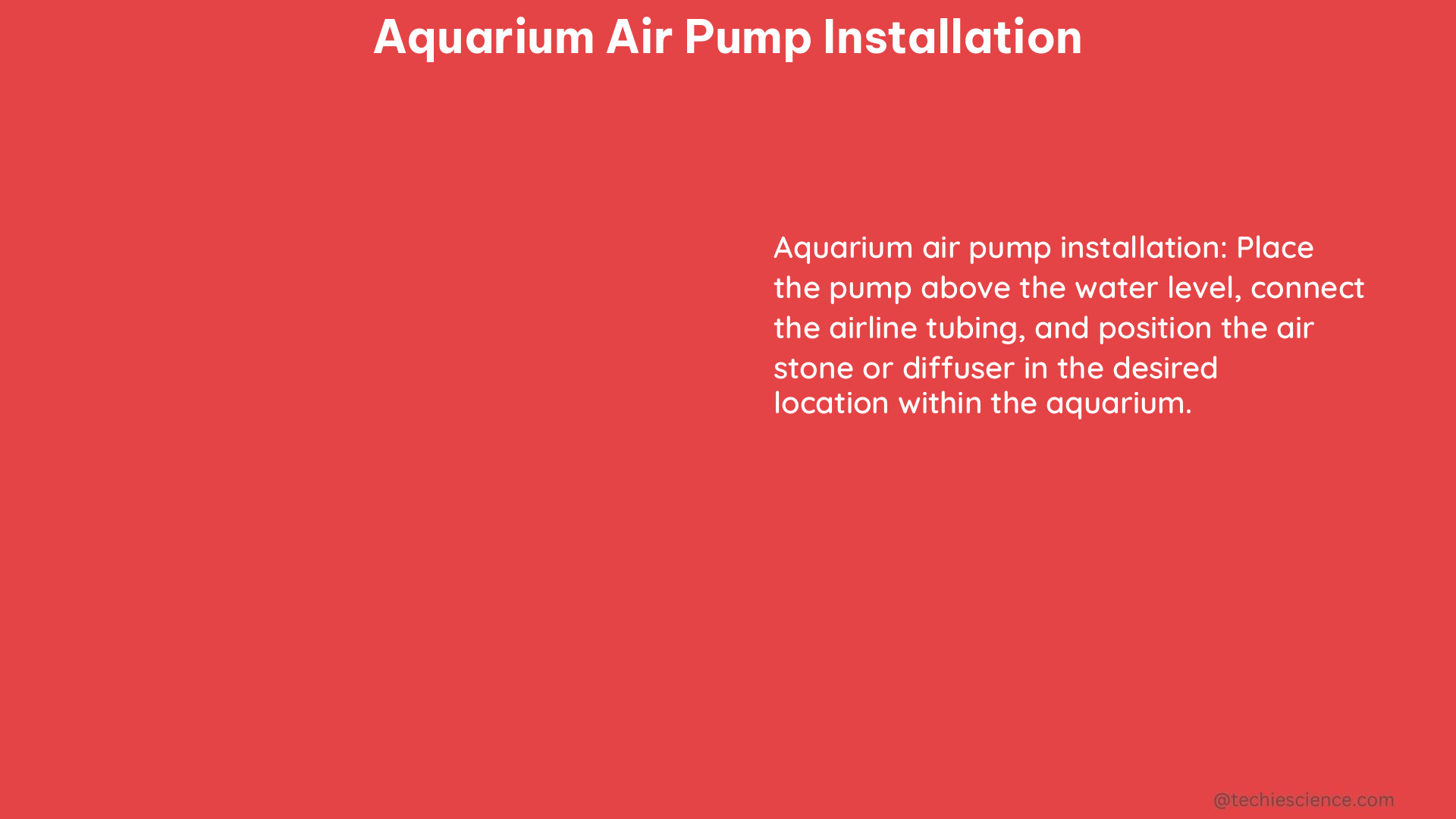Ensuring optimal oxygenation and efficient air circulation in an aquarium is crucial for the health and well-being of aquatic life. The installation of an air pump is a critical step in achieving this goal, and understanding the various measurable and quantifiable data points is essential for a successful setup. This comprehensive guide will delve into the technical details and provide you with a step-by-step approach to mastering aquarium air pump installation.
Airflow Rate (LPM): The Lifeblood of Your Aquarium
The airflow rate, measured in liters per minute (LPM), is a fundamental parameter that determines the efficiency of an air pump. This value represents the volume of air that the pump can deliver in a minute, and it directly impacts the oxygenation levels in your aquarium. As a general rule, you should aim for an airflow rate of at least 1 LPM per 10 gallons of water in your tank. For instance, a 50-gallon aquarium would require an air pump with a minimum airflow rate of 5 LPM to ensure adequate aeration.
It’s important to note that the airflow rate can be affected by various factors, such as the size and length of the airline tubing, the number of outlets, and the depth of the air diffusers. When selecting an air pump, consider the specific requirements of your aquarium setup and choose a model with a sufficient airflow rate to meet your needs.
Pressure (Mpa): Overcoming Depth Challenges

The pressure generated by the air pump, measured in megaPascals (Mpa), is another crucial factor in aquarium air pump installation. This parameter determines the depth at which the air bubbles can effectively rise in the water column, ensuring that the oxygen-rich air reaches the desired areas of the tank.
As a general guideline, an air pump with a pressure rating of 0.016 Mpa (or 0.16 bar) can generate sufficient pressure to deliver air bubbles to a depth of 161 cm (or 5.3 feet) in the aquarium. This depth is typically adequate for most standard-sized tanks, but for deeper aquariums or those with specific design features, you may need to consider an air pump with a higher pressure rating to ensure optimal oxygenation throughout the water column.
Tubing Size (mm): Optimizing Airflow Efficiency
The inner diameter of the airline tubing, measured in millimeters (mm), plays a significant role in the overall efficiency of the air pump installation. The size of the tubing directly impacts the airflow rate and pressure, with larger diameters allowing for higher airflow rates and lower pressure losses.
As a general guideline, consider the following tubing size recommendations:
| Aquarium Size (Gallons) | Recommended Tubing Size (mm) |
|---|---|
| Up to 20 | 4-6 mm |
| 20 to 50 | 6-8 mm |
| 50 to 100 | 8-10 mm |
| 100 and above | 10-12 mm |
Using the appropriate tubing size for your aquarium setup will ensure efficient oxygen delivery and minimize pressure drops, resulting in optimal performance of your air pump.
Number of Outlets: Balancing Airflow Distribution
The number of outlets on the air pump or manifold directly affects the distribution of airflow to individual tanks or filtration systems. A larger number of outlets can help balance the airflow and pressure across multiple tanks, ensuring that each aquarium or filtration component receives the desired airflow.
When planning your air pump installation, consider the number of tanks or filtration systems you need to supply with air. Choose an air pump or manifold with a sufficient number of outlets to accommodate your setup, allowing for even distribution of airflow and adequate oxygenation in each tank.
Valve Regulation: Fine-Tuning Airflow and Pressure
Valves, such as t-valves and flow control valves, can be used to regulate the airflow and pressure in the air pump system. These valves play a crucial role in balancing the air distribution among multiple outlets, ensuring that each tank or filtration system receives the desired airflow.
By incorporating valves into your air pump installation, you can fine-tune the airflow and pressure to meet the specific needs of your aquarium setup. This allows you to adjust the air delivery to individual tanks or components, ensuring that each receives the appropriate level of oxygenation.
Check Valve Installation: Preventing Backflow Disasters
Check valves are essential components in aquarium air pump installations, as they prevent water from siphoning back into the air pump in the event of a power outage or other disruptions. Proper installation of check valves is crucial to protect your air pump from potential damage and ensure the continued operation of your aquarium’s aeration system.
When installing check valves, it is recommended to place them a few inches before the t-valve or any other branching points in the airline tubing. This strategic placement ensures that water cannot flow back into the air pump, safeguarding the integrity of your equipment and maintaining the overall efficiency of your aquarium’s air circulation system.
By understanding and implementing these measurable and quantifiable data points, you can ensure a successful and efficient aquarium air pump installation. Remember to consider airflow rate, pressure, tubing size, number of outlets, valve regulation, and check valve installation to create a well-designed and optimized aeration system for your aquatic environment.
References:
– Measuring Air Pump Airflow and Pressure
– Sizing Up Large Air Pump for Fish Room
– Aquarium Air Pump Installation Guide
